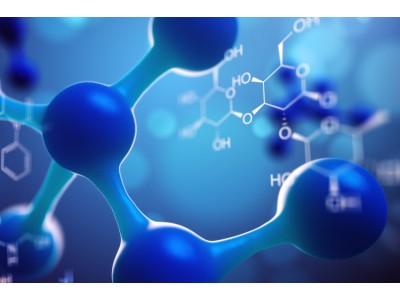| Description | D-myo-Inositol-1,4,5-triphosphate trisodium (Inositol 1,4,5-trisphosphate trisodium) is a second messenger produced in cells by phospholipase C-mediated hydrolysis of phosphatidylinositol-4,5-bisphosphate. D-myo-Inositol-1,4,5-triphosphate trisodium binds to Ins(1,4,5)P3 receptor binding results in the opening of calcium channels and an increase in intracellular calcium. |
| In vitro | The dissociation constant (KD) for D-myo-Inositol-1,4,5-trisphosphate (As an inositol phosphate derivative) complexed with Pr55Gag is 2170 μM. The binding affinities of D-myo-Inositol-1,4,5-trisphosphate for matrix (MA) with KD=568 μM.[4] |
| Synonyms | Inositol 1,4,5-trisphosphate trisodium, Ins(1,4,5)-P3 trisodium, D-myo-Inositol-1,4,5-triphosphate (sodium salt), Ins(1,4,5)P3 |
| molecular weight | 489.06 |
| Molecular formula | C6H15Na3O15P3 |
| CAS | 141611-10-1 |
| Storage | store at low temperature | Powder: -20°C for 3 years | In solvent: -80°C for 1 year |
| Solubility | PBS (pH 7.2): 50 mg/mL |
| References | 1. Streb H, et al. Release of Ca2+ from a nonmitochondrial intracellular store in pancreatic acinar cells by inositol-1,4,5-trisphosphate. Nature. 1983;306(5938):67-69. 2. Yoshida Y, et al. Structure and function of inositol 1,4,5-trisphosphate receptor. Jpn J Pharmacol. 1997;74(2):125-137. 3. Exton JH. Regulation of phosphoinositide phospholipases by hormones, neurotransmitters, and other agonists linked to G proteins. Annu Rev Pharmacol Toxicol. 1996;36:481-509. 4. Anraku K, et al. Highly sensitive analysis of the interaction between HIV-1 Gag and phosphoinositide derivatives based on surface plasmon resonance. Biochemistry. 2010;49(25):5109-5116. |

D-myo-Inositol-1,4,5-triphosphate trisodium
CAS No.: 141611-10-1
D-myo-Inositol-1,4,5-triphosphate trisodium (Inositol 1,4,5-trisphosphate trisodium) is a second messenger produced in c
Sales Email:peptidedb@qq.com
This product is for research use only, not for human use. We do not sell to patients.